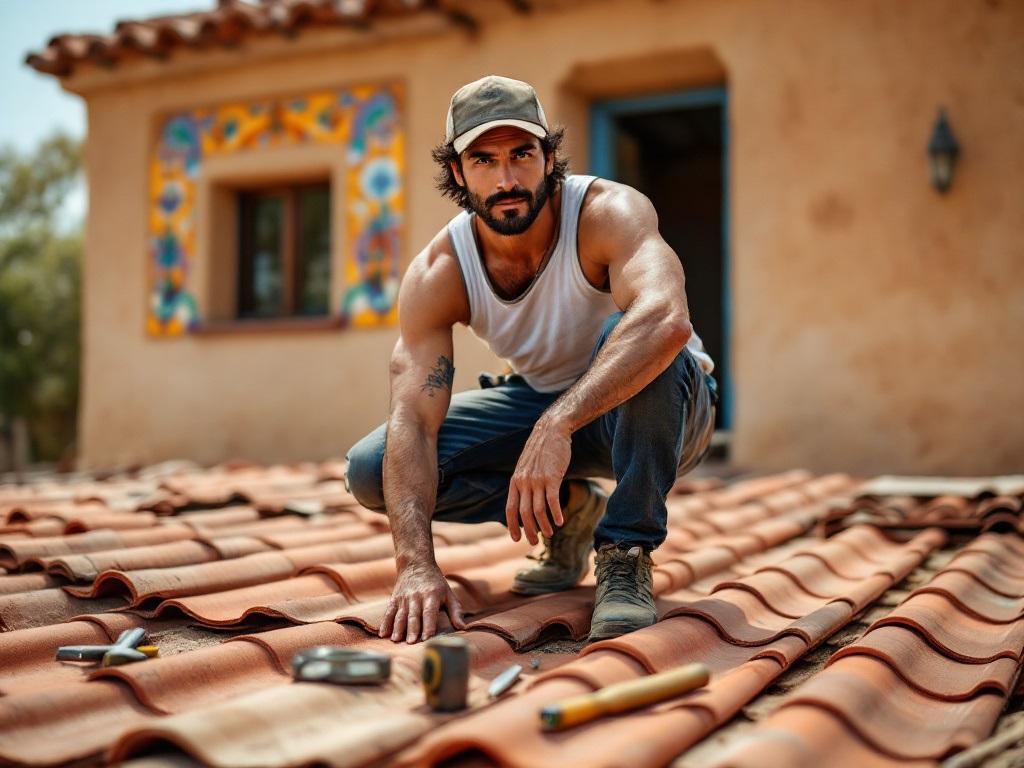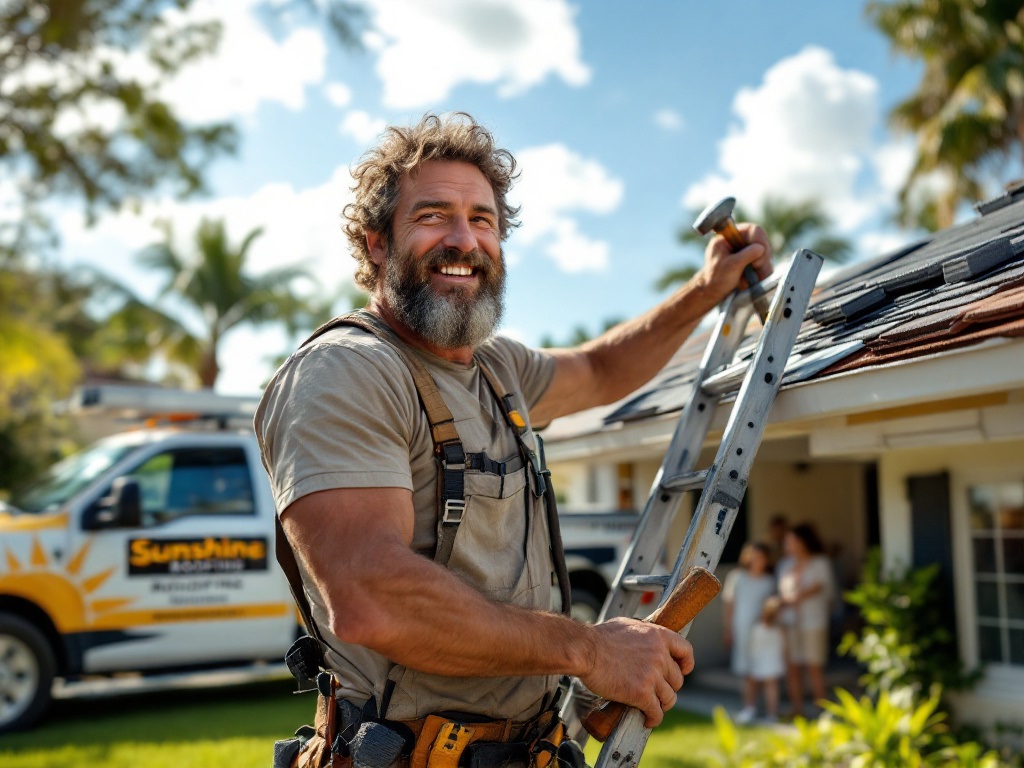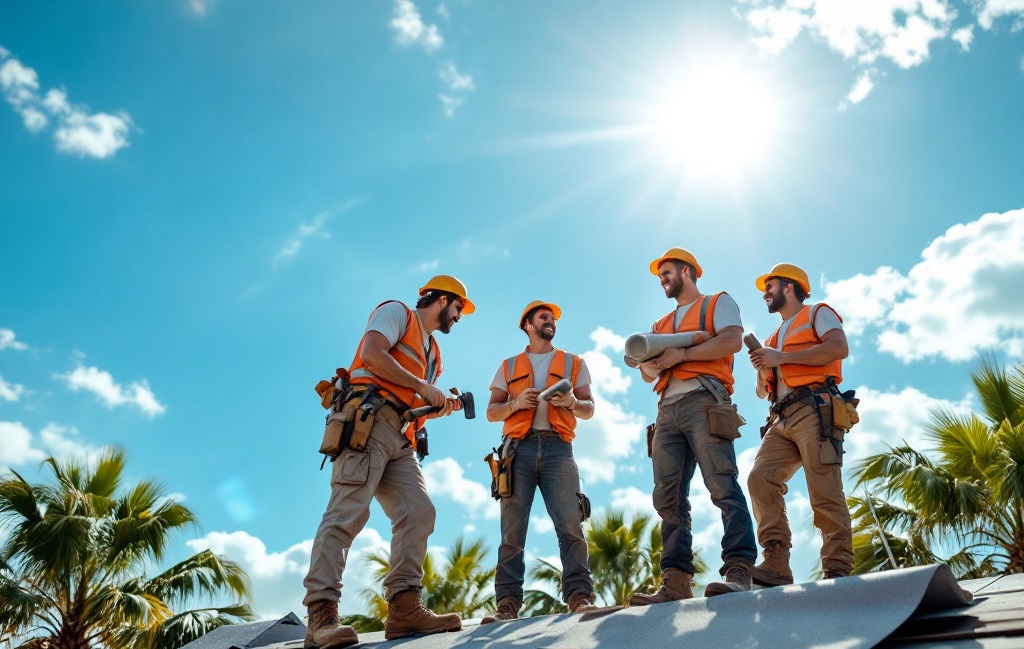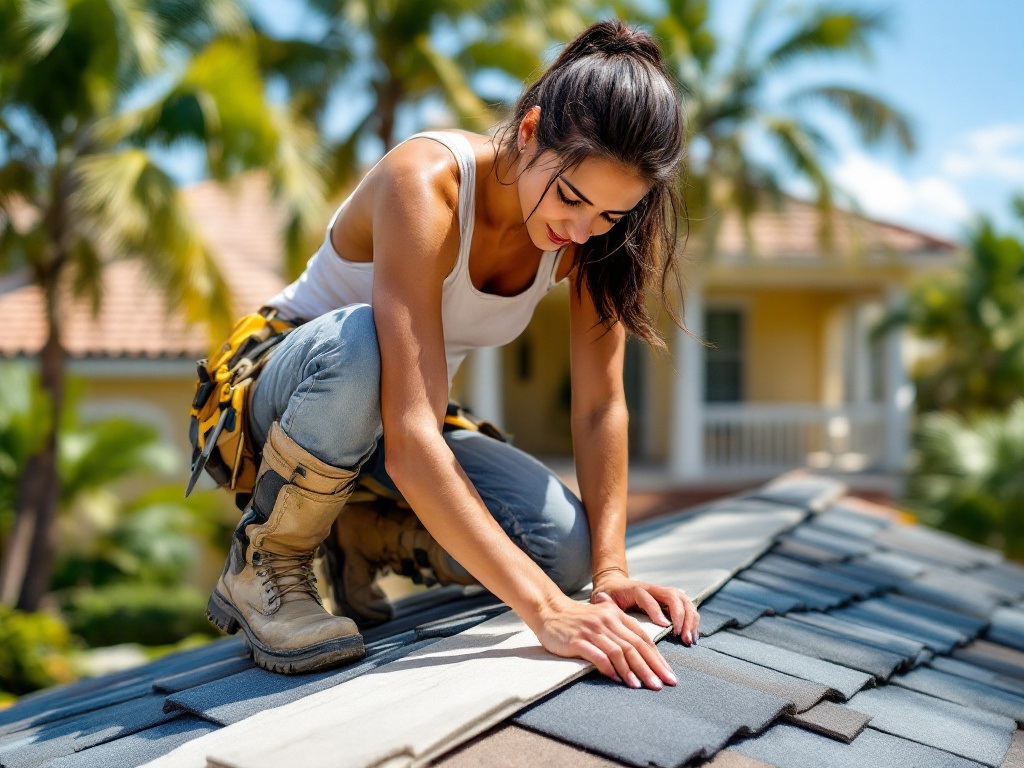
Cost to Replace Roof in Tampa Bay: Everything You Want to Know
Introduction to Roof Replacement Costs in Tampa Bay
Replacing a roof in Tampa Bay is a critical investment for homeowners, given the region’s susceptibility to hurricanes, heavy rains, and intense UV exposure. Over time, these elements can degrade roofing materials, leading to leaks, structural damage, and higher energy bills. Understanding the cost to replace a roof in Tampa Bay starts with evaluating factors like material choices, labor expenses, and local building codes. Proactive replacement not only safeguards your home but also enhances curb appeal and property value.
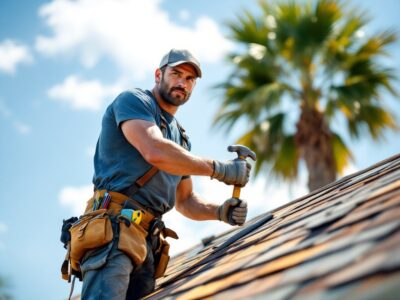 Timing is key when planning a roof replacement in Tampa Bay. The area’s humid climate accelerates wear and tear, making regular inspections essential. Homeowners should look for signs like missing shingles, water stains, or granule loss in gutters. Partnering with a licensed contractor familiar with Tampa Bay’s weather challenges ensures compliance with regional regulations and optimal material selection.
Timing is key when planning a roof replacement in Tampa Bay. The area’s humid climate accelerates wear and tear, making regular inspections essential. Homeowners should look for signs like missing shingles, water stains, or granule loss in gutters. Partnering with a licensed contractor familiar with Tampa Bay’s weather challenges ensures compliance with regional regulations and optimal material selection.
Key Considerations for Roof Replacement in Tampa Bay
- Material durability against high winds and moisture
- Local building codes for hurricane-resistant installations
- Seasonal timing to avoid rainy or storm-prone months
- Contractor expertise in handling Tampa Bay’s unique climate
Choosing the right materials is pivotal for balancing the cost to replace a roof in Tampa Bay with long-term benefits. Asphalt shingles, for instance, are budget-friendly but may require more frequent replacements compared to metal or tile. Additionally, Tampa Bay’s strict building codes often mandate reinforced underlayment or impact-resistant materials, which can influence project expenses.
Insurance and financing options also play a role in managing upfront costs. Many Tampa Bay homeowners leverage storm damage claims to offset replacement expenses, provided their policy covers hurricane-related wear. Exploring local incentives for energy-efficient roofing can further reduce long-term costs. Prioritizing quality installation and durable materials ensures your investment withstands Tampa Bay’s demanding climate for decades.
Key Factors Influencing Roof Replacement Costs in Tampa Bay
The cost to replace a roof in Tampa Bay varies widely based on material selection, labor rates, and roof complexity. High-quality materials like metal or slate have higher upfront costs but offer longevity, while asphalt shingles provide short-term affordability. Labor accounts for 40–60% of total expenses, influenced by Tampa Bay’s competitive contractor market and seasonal demand spikes.
Roof size and pitch further impact pricing. Steeper roofs require specialized equipment and safety measures, increasing labor time. Similarly, larger homes need more materials, directly affecting the budget. Tampa Bay’s building codes also mandate specific installation practices, such as hurricane straps, which add to material and labor costs.
Breaking Down Cost Components
- Material quality and lifespan
- Roof accessibility and slope
- Permitting fees and inspections
- Debris removal and disposal services
Unexpected issues like rot or structural damage discovered during tear-off can escalate costs. Tampa Bay’s humidity often leads to hidden moisture problems, necessitating decking repairs. Homeowners should budget a 10–15% contingency for such surprises.
Seasonal timing also affects pricing. Scheduling replacements during Tampa Bay’s dry season (November–April) may yield lower labor rates compared to peak hurricane months. Obtaining multiple quotes from licensed contractors ensures transparency and helps identify fair pricing. Prioritizing energy-efficient materials can also unlock rebates, offsetting the initial cost to replace a roof in Tampa Bay.
Asphalt Shingles: Cost and Durability
Asphalt shingles remain the most popular roofing choice in Tampa Bay due to their affordability and ease of installation. The average cost to replace a roof with asphalt shingles in Tampa Bay ranges from 5,000to12,000, depending on the quality of materials and roof size. These shingles typically last 15–25 years, making them a practical option for budget-conscious homeowners.
However, Tampa Bay’s harsh climate can shorten their lifespan. High winds during hurricanes may lift shingles, while UV exposure causes fading and brittleness. Opting for impact-resistant or architectural shingles enhances durability, though it raises initial costs.
Pros and Cons of Asphalt Shingles
- Low upfront cost compared to metal or tile
- Wide variety of colors and styles
- Vulnerable to wind uplift and thermal cracking
- Shorter lifespan in extreme weather
Architectural shingles, a premium asphalt variant, offer better wind resistance and a 30-year lifespan. Tampa Bay homeowners often choose these to balance cost and durability. Regular maintenance, like replacing damaged shingles post-storm, extends their service life.
Insurance premiums may also decrease with impact-resistant upgrades, offsetting the cost to replace a roof in Tampa Bay. While asphalt isn’t the longest-lasting option, its versatility and affordability make it ideal for those prioritizing immediate savings.
Metal Roofs: Long-Term Investment Analysis
Metal roofing is gaining traction in Tampa Bay for its resilience against hurricanes and fire. Though the cost to replace a roof with metal in Tampa Bay averages 15,000–30,000, its 50-year lifespan justifies the investment. Metal panels reflect solar heat, reducing cooling costs by up to 25%—a significant advantage in Florida’s climate.
Installation requires specialized labor, contributing to higher upfront expenses. However, Tampa Bay’s frequent severe weather makes metal’s wind resistance (up to 140 mph) a practical choice.
Why Metal Roofs Excel in Tampa Bay
- Superior durability against storms and corrosion
- Energy-efficient properties lower utility bills
- Minimal maintenance compared to shingles or tile
Metal roofs also qualify for green building incentives in Tampa Bay, enhancing long-term savings. While the initial cost to replace a roof with metal is steep, homeowners recoup expenses through reduced repair needs and energy savings.
Insurance providers often offer discounts for metal roofs due to their fire and wind resistance. For Tampa Bay residents planning to stay in their homes long-term, metal roofing is a cost-effective, sustainable solution.
Tile Roofs: Aesthetic and Climatic Suitability in Tampa Bay
Tile roofs are a hallmark of Tampa Bay’s architectural style, offering Mediterranean charm and exceptional durability. The cost to replace a roof with clay or concrete tiles in Tampa Bay ranges from 20,000to45,000, depending on the material and roof complexity. These roofs excel in the region’s climate, reflecting sunlight to reduce heat absorption and resisting wind speeds up to 150 mph. Their longevity—often 50+ years—makes them a popular choice for homeowners prioritizing aesthetics and resilience.
However, tile roofs require a robust structural foundation due to their weight. Older Tampa Bay homes may need reinforcement, adding to the project’s cost to replace a roof. Additionally, tiles can crack under impact from falling debris, necessitating periodic inspections after severe weather.
Advantages and Challenges of Tile Roofs
- Unmatched aesthetic appeal and curb appeal
- Superior resistance to fire, rot, and insects
- Heavyweight requiring reinforced roof decks
- Higher installation costs compared to asphalt or metal
Despite the upfront expense, tile roofs offer long-term savings through minimal maintenance and energy efficiency. Tampa Bay’s humid climate accelerates mold growth on some materials, but tiles naturally resist moisture. Homeowners can also opt for lighter synthetic tiles, which mimic traditional styles while reducing structural demands.
Insurance providers in Tampa Bay may offer discounts for tile roofs due to their fire-resistant properties. Pairing tiles with proper ventilation systems further enhances their performance, ensuring your investment aligns with both climatic needs and design preferences.
Flat Roof Systems: Commercial and Residential Roofing Options
Flat roofs are common in Tampa Bay’s commercial buildings and modern residential roofing designs, offering functional space for HVAC units or rooftop amenities. The cost to replace a roof with flat systems like TPO, EPDM, or modified bitumen ranges from 8,000to25,000, depending on materials and waterproofing requirements. These systems prioritize water drainage and UV resistance, critical in Tampa Bay’s storm-prone climate.
Residential flat roofs often use modified bitumen for its flexibility, while commercial properties favor TPO for its energy-efficient reflectivity. Proper installation is key, as poor seams or inadequate slope can lead to pooling water—a major issue during Tampa Bay’s rainy season.
Choosing the Right Flat Roof System
- TPO: Reflective, energy-efficient, and resistant to punctures
- EPDM: Durable rubber membrane ideal for extreme temperatures
- Modified Bitumen: Affordable and easy to repair
Labor costs for flat roofs in Tampa Bay are typically lower than pitched roofs due to easier accessibility. However, maintenance expenses can add up if leaks develop. Homeowners should prioritize coatings or sealants to extend the roof’s lifespan.
Tampa Bay’s building codes mandate specific drainage standards for flat roofs to prevent water damage. Investing in regular inspections and prompt repairs ensures these systems remain cost-effective over time.
Wood Shake Roofs: Charm vs. Maintenance
Wood shake roofs offer rustic beauty that complements Tampa Bay’s historic and coastal homes. The cost to replace a roof with wood shakes averages 18,000–35,000, influenced by material quality and fire-retardant treatments. While aesthetically appealing, wood requires diligent maintenance in Tampa Bay’s humid climate to prevent rot, mold, and insect infestations.
Cedar shakes, the most common type, naturally resist moisture but degrade faster in high-humidity environments. Homeowners must clean debris regularly and apply sealants every 3–5 years to mitigate weathering.
Pros and Cons of Wood Shakes
- Eco-friendly and biodegradable material
- Excellent natural insulation properties
- High susceptibility to fire and fungal growth
- Insurance premiums may rise due to fire risk
Tampa Bay’s frequent thunderstorms and humidity make wood shakes a less practical long-term option. Many homeowners opt for synthetic alternatives that replicate wood’s look without the upkeep. While the initial cost to replace a roof with wood is moderate, long-term maintenance expenses can surpass those of metal or tile.
Slate Roofs: Premium Material Considerations
Slate roofs represent the pinnacle of luxury and longevity in Tampa Bay, with lifespans exceeding 100 years. The cost to replace a roof with slate tiles ranges from 30,000to75,000, reflecting the material’s weight, durability, and labor-intensive installation. Slate is impervious to Tampa Bay’s humidity, UV rays, and wind, making it a timeless investment for high-end homes.
Installation demands specialized contractors due to slate’s fragility and the need for reinforced framing. Older homes may require structural upgrades, further increasing expenses.
Why Slate Roofs Are Worth the Investment
- Unrivaled durability and fire resistance
- Minimal maintenance beyond occasional inspections
- Adds significant resale value to Tampa Bay properties
While the upfront cost to replace a roof with slate is steep, its century-long lifespan eliminates future replacement expenses. Tampa Bay homeowners also benefit from slate’s natural cooling properties, which reduce energy bills. Ensure your contractor has experience with slate to avoid installation errors that compromise performance.
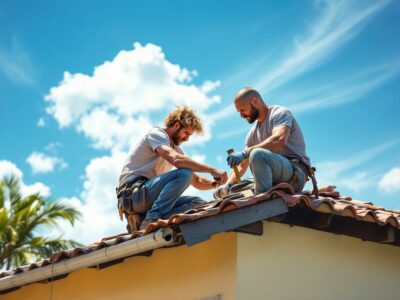 TPO Roofing: Energy Efficiency and Costs
TPO Roofing: Energy Efficiency and Costs
TPO (thermoplastic polyolefin) roofing is a top choice for Tampa Bay’s commercial and residential flat roofs due to its reflective surface and energy savings. The cost to replace a roof with TPO averages 10,000–20,000, depending on membrane thickness and project size. Its white surface reflects up to 85% of solar heat, significantly lowering cooling costs in Florida’s scorching summers.
TPO is also resistant to punctures and chemical exposure, making it ideal for Tampa Bay’s industrial areas. However, improper installation can lead to seam failures, especially during temperature fluctuations.
Key Benefits of TPO Roofing
- Energy Star-rated for superior efficiency
- Recyclable material aligning with Tampa Bay’s green initiatives
- 20–30-year lifespan with proper maintenance
Contractors in Tampa Bay often recommend TPO for its balance of affordability and performance. Pairing it with insulation enhances energy savings, while routine inspections prevent leaks. Though less durable than metal or tile, TPO remains a cost-effective solution for flat roofs.
EPDM Roofing: Pros and Cons for Tampa Bay Climate
EPDM (ethylene propylene diene terpolymer) roofing is a durable, rubber-like option popular for flat and low-slope roofs in Tampa Bay. The cost to replace a roof with EPDM in Tampa Bay typically ranges from 8,000to18,000, depending on membrane thickness and installation complexity. Known for its resistance to UV radiation and extreme temperature fluctuations, EPDM performs well in Tampa Bay’s humid climate, where summer heat and sudden storms are common. Its seamless design minimizes leaks, making it a reliable choice for both residential roofs and commercial properties.
However, EPDM’s dark color can absorb heat, potentially increasing cooling costs. While repairs are straightforward, punctures from debris or foot traffic may require frequent patching. Homeowners should weigh these factors against the material’s affordability and lifespan of 20–30 years.
Key Advantages and Drawbacks
- Excellent resistance to ozone and weathering
- Affordable installation compared to TPO or metal
- Heat absorption may raise energy bills
- Vulnerable to punctures in high-traffic areas
Tampa Bay’s frequent thunderstorms make proper drainage crucial for EPDM roofs. Contractors often recommend white-coated EPDM to enhance reflectivity and reduce heat retention. Pairing the membrane with adequate insulation can further optimize energy efficiency.
Insurance providers in Tampa Bay may offer lower premiums for EPDM due to its fire-resistant properties. Regular inspections after severe weather help identify minor issues before they escalate, ensuring the cost to replace a roof remains manageable over time.
Modified Bitumen: Flexibility and Installation
Modified bitumen roofs combine asphalt with polymerized rubber, offering flexibility ideal for Tampa Bay’s temperature swings. The cost to replace a roof with modified bitumen in Tampa Bay averages 7,000–15,000, influenced by installation method (torch-down or cold adhesive) and roof size. Its layered construction provides superior waterproofing, critical for the area’s heavy rains and hurricane threats.
This material is particularly suited for low-slope residential roofs and commercial buildings. While torch-down installations require skilled labor, cold-applied options reduce fire risks during the process.
Why Choose Modified Bitumen?
- Resists thermal cracking and UV damage
- Easy to repair with patches or sealants
- Affordable for mid-range budgets
- Requires professional installation for optimal performance
Tampa Bay contractors often reinforce modified bitumen with fiberglass or polyester layers to enhance durability. Properly installed, it can last 15–20 years with minimal maintenance.
Homeowners should prioritize coatings to reflect sunlight and extend the roof’s lifespan. While the initial cost to replace a roof with modified bitumen is moderate, its adaptability to Tampa Bay’s climate makes it a practical long-term solution.
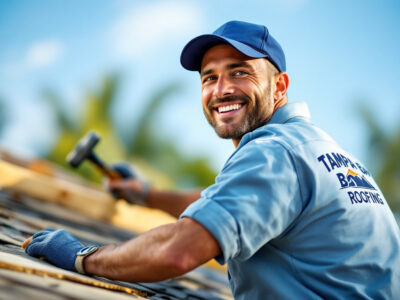 Green Roofs: Eco-Friendly Alternatives
Green Roofs: Eco-Friendly Alternatives
Green roofs, featuring vegetation layers, are emerging as sustainable options in Tampa Bay. The cost to replace a roof with a green system ranges from 20,000to50,000, depending on plant variety and structural support needs. These roofs reduce urban heat island effects and manage stormwater runoff, aligning with Tampa Bay’s environmental goals.
However, the weight of soil and plants necessitates reinforced framing, increasing upfront expenses. Maintenance, including irrigation and weed control, adds to long-term costs.
Benefits and Challenges of Green Roofs
- Lowers indoor temperatures by up to 10°F
- Qualifies for Tampa Bay’s green building incentives
- High installation and maintenance costs
- Requires specialized contractors for setup
Despite these hurdles, green roofs can slash energy bills and extend roof lifespan by protecting underlying materials from UV exposure. Tampa Bay homeowners may also benefit from tax rebates for eco-friendly upgrades.
For those committed to sustainability, the cost to replace a roof with a green system is offset by long-term ecological and financial rewards. Proper planning with engineers ensures the structure can handle the load during heavy rains.
Labor Costs: Breakdown of Contractor Fees in Tampa Bay
Labor accounts for 40–60% of the total cost to replace a roof in Tampa Bay, averaging 3–7 per square foot. Rates vary based on roof pitch, material complexity, and seasonal demand. Steeper roofs or intricate designs require more time and safety precautions, raising labor fees.
Tampa Bay’s hurricane season (June–November) often spikes demand, leading to higher rates. Contractors may charge premiums for emergency repairs or expedited projects during this period.
Factors Affecting Labor Expenses
- Roof accessibility and height
- Experience level of the crew
- Permitting and inspection coordination
- Debris removal and cleanup services
Homeowners can save by scheduling replacements during the dry season (December–April) when contractors offer competitive pricing. Always verify licenses and insurance to avoid subpar work that inflates long-term costs.
Investing in skilled labor ensures compliance with Tampa Bay’s building codes, particularly hurricane straps and wind mitigation requirements. While cutting corners may reduce upfront fees, it risks costly repairs down the line.
Permit Requirements and Associated Fees in Tampa Bay
Roof replacements in Tampa Bay typically require permits to ensure compliance with Florida’s strict building codes. Permit fees range from 150to1,000, depending on roof size and project scope. These regulations mandate wind-resistant materials and proper installation techniques to withstand hurricanes.
Skipping permits can result in fines or complications during home sales. Contractors usually handle paperwork, but homeowners should confirm permits are secured before work begins.
Common Permit Costs in Tampa Bay
- Residential roofing: 200–500
- Commercial roofing projects: 500–1,000
- Reinspection fees: 50–100 if revisions are needed
Tampa Bay’s permitting process includes inspections at key stages, such as after decking repair or final installation. Budgeting for these fees upfront prevents surprises in the total cost to replace a roof.
Energy-efficient upgrades, like cool roofing materials, may qualify for expedited permitting or fee reductions. Always check local ordinances to ensure compliance and avoid delays.
Disposal and Debris Removal Costs in Tampa Bay
Removing old roofing materials adds 500–2,000 to the cost to replace a roof in Tampa Bay. Fees depend on debris volume, landfill charges, and labor for hauling. Asphalt shingle disposal is typically cheaper than tile or slate due to lighter weight.
Many Tampa Bay contractors include disposal in their quotes, but homeowners should confirm this to avoid hidden fees. Recycling options for metal or synthetic materials can reduce landfill costs.
Waste Management Considerations
- Dumpster rental: 300–600 per week
- Labor for loading and transport: 200–500
- Recycling incentives for eco-friendly materials
Tampa Bay’s waste facilities often charge by weight, so heavier materials like concrete tiles increase disposal costs. Planning for debris removal during the project’s estimate phase ensures smoother execution.
Eco-conscious homeowners might explore donation programs for usable materials, though availability depends on the roof’s condition. Proper disposal not only keeps the project tidy but also aligns with Tampa Bay’s sustainability initiatives.
How Roof Size Impacts Total Expenses
The cost to replace a roof in Tampa Bay is directly influenced by the size of your roof, measured in square footage. Larger roofs require more materials, such as shingles or tiles, and additional labor hours for installation. On average, Tampa Bay homeowners spend 4–12 per square foot, meaning a 2,000-square-foot roof could range from 8,000to24,000. While economies of scale might slightly reduce per-square-foot costs for bigger projects, the overall expense remains substantial due to material volume.
Roof shape also plays a role. Complex layouts with multiple angles or dormers increase waste during material cutting, raising costs. Contractors in Tampa Bay often factor in 10–15% extra materials for such projects to account for trimming and errors.
Key Factors Linking Roof Size and Costs
- Material quantity (e.g., underlayment, flashing, shingles)
- Labor time for installation and tear-off
- Waste disposal fees for larger debris volumes
- Potential structural reinforcements for expansive roofs
For multi-story homes, accessibility challenges can further elevate labor costs. Roofers may need specialized equipment to safely handle materials at greater heights. Tampa Bay’s building codes may also require additional safety measures, such as harnesses or scaffolding, adding to the budget.
Homeowners should request detailed quotes that break down material and labor costs per square foot. Comparing these estimates helps identify outliers and ensures transparency. Investing in energy-efficient materials during a large-scale replacement can offset long-term utility bills, balancing the initial cost to replace a roof in Tampa Bay.
 Roof Pitch: Complexity and Cost Correlation
Roof Pitch: Complexity and Cost Correlation
Roof pitch—the steepness of a roof—significantly impacts the cost to replace a roof in Tampa Bay. Low-pitch roofs (under 3:12) are simpler to work on, often costing 4–8 per square foot. Steeper roofs (6:12 or higher) require safety harnesses, specialized equipment, and slower labor, increasing costs to 8–15 per square foot. The added risk of working on steep slopes justifies higher contractor fees.
Materials also vary by pitch. Asphalt shingles work well on moderate slopes, while metal or tile may be necessary for steeper designs. Tampa Bay’s hurricane codes sometimes mandate steeper pitches for better wind resistance, indirectly affecting material choices and costs.
Why Pitch Matters in Tampa Bay
- Safety protocols increase labor time and costs
- Certain materials perform better on specific slopes
- Building codes may dictate pitch for wind mitigation
Steep roofs in Tampa Bay often require enhanced underlayment or hurricane straps to meet local regulations. These additions prevent wind uplift but add to the project’s cost to replace a roof. Homeowners should consult contractors familiar with pitch-related code requirements to avoid fines or rework.
While steeper roofs may last longer due to efficient water runoff, the upfront investment is higher. Balancing aesthetics, safety, and budget ensures a roof that withstands Tampa Bay’s climate without overspending.
Architectural Complexity and Additional Charges
Unique architectural features like skylights, chimneys, or multiple valleys elevate the cost to replace a roof in Tampa Bay. These elements require custom cutting, additional flashing, and meticulous sealing to prevent leaks. For example, installing a roof around a chimney might add 500–2,000 to the total cost, depending on the complexity.
Tampa Bay’s historic homes often have intricate designs, such as turrets or dormers, which demand specialized labor. Contractors may charge 100–300 per hour for skilled carpenters to ensure precise fits around these features.
Common Complexity-Driven Expenses
- Custom flashing for vents or protrusions
- Reinforcement for heavy materials like tile or slate
- Time-intensive labor for detailed cuts and alignment
- Engineering assessments for unconventional designs
Homeowners should discuss these features upfront with contractors to avoid surprise charges. Tampa Bay’s strict building codes may also require permits for structural changes, adding to timelines and costs.
While simplifying the roof design can reduce expenses, preserving architectural integrity often justifies the investment. Prioritizing experienced contractors familiar with Tampa Bay’s housing styles ensures both compliance and aesthetic appeal.
Seasonal Timing: Best and Worst Times for Replacement in Tampa Bay
The ideal time to replace a roof in Tampa Bay is during the dry season (November–April), when rainfall is minimal. Contractors offer competitive pricing due to lower demand, and projects face fewer weather delays. Conversely, hurricane season (June–November) often sees higher labor costs and material shortages, inflating the cost to replace a roof.
Scheduling during off-peak months can yield discounts of 10–15%. However, urgent replacements after storm damage may incur emergency fees. Tampa Bay homeowners should plan ahead to avoid peak-season price surges.
Seasonal Cost Considerations
- Dry season: Lower rates, faster completion
- Hurricane season: Higher demand, potential delays
- Winter: Cooler temperatures ease labor conditions
- Summer: Heat risks slowing down crews
Insurance claims for storm damage often lead to a surge in contractor bookings, delaying non-emergency projects. Tampa Bay residents should monitor weather forecasts and book inspections early if leaks arise.
Balancing timing and budget ensures a cost-effective replacement. While off-season projects save money, urgent repairs during storms prioritize safety over cost savings.
How to Choose a Reliable Tampa Bay Contractor
Selecting a trustworthy contractor is critical to managing the cost to replace a roof in Tampa Bay. Start by verifying licenses (e.g., Florida CBC 056051) and insurance. Check reviews on platforms like Google or BBB, and request local references to assess past work quality.
Avoid contractors who demand full payment upfront. Reputable Tampa Bay roofers typically require a 10–30% deposit. Ensure estimates detail material brands, labor costs, and warranty terms to prevent hidden fees.
Red Flags to Watch For
- Lack of physical office address
- Pressure to sign contracts immediately
- Vague or verbal warranties
- No proof of workers’ compensation insurance
Tampa Bay homeowners should prioritize contractors certified by manufacturers (e.g., GAF, Owens Corning), as this ensures adherence to material-specific installation standards. Local expertise in hurricane-resistant techniques is also vital.
Requesting multiple quotes helps identify fair pricing. A mid-range bid often balances quality and affordability, preventing overspending while ensuring durability against Tampa Bay’s weather extremes.
10 Signs You Need a Roof Replacement
- Curling or Missing Shingles: Exposure to Tampa Bay’s UV rays and storms causes shingles to warp or detach.
- Granules in Gutters: Excessive granule loss signals aging asphalt shingles.
- Daylight Through Attic: Visible gaps indicate roof deck damage.
- Sagging Roof: Structural weakness from moisture or rot.
- Frequent Leaks: Persistent water intrusion despite repairs.
- Mold or Moss Growth: Moisture retention accelerates decay.
- High Energy Bills: Poor insulation or ventilation.
- Age Over 20 Years: Most asphalt roofs exceed lifespan in Tampa Bay’s climate.
- Storm Damage: Hail or wind compromises integrity.
- Neighbor Renovations: Localized weather events may affect multiple homes.
Ignoring these signs risks higher cost to replace a roof due to secondary damage. Proactive inspections, especially post-storm, help catch issues early.
Tampa Bay’s humidity accelerates wear, making bi-annual inspections wise. Contractors can spot hidden problems like soft spots or rusted flashing before they escalate. Investing in timely replacement avoids emergency repairs and preserves home value.
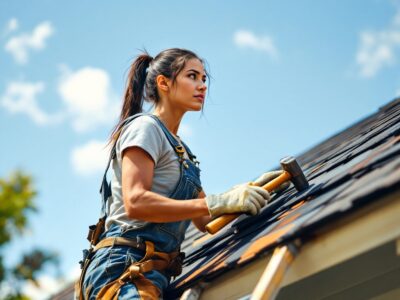 DIY vs. Professional Installation: Risks and Rewards
DIY vs. Professional Installation: Risks and Rewards
DIY roof replacement might seem cost-effective, but Tampa Bay’s building codes and climate make it risky. Improper installation can void warranties, lead to leaks, or fail wind inspections. The average DIYer spends 3,000–8,000 on materials but risks costly errors.
Professionals ensure compliance with codes, offer workmanship warranties, and complete projects faster. While the cost to replace a roof professionally is higher (8,000–30,000), it includes permits, disposal, and expertise.
When DIY Makes Sense
- Small repairs (e.g., replacing a few shingles)
- Temporary fixes before professional help
- Access to skilled labor guidance
For full replacements, Tampa Bay homeowners benefit from contractors’ knowledge of hurricane straps, sealed roof decks, and energy-efficient materials. Mistakes in these areas can result in failed inspections or storm damage.
Balancing skill level and project scope is key. While DIY saves upfront costs, professionals provide peace of mind and long-term reliability in Tampa Bay’s demanding climate.
Understanding Roofing Warranties
Roofing warranties are essential for Tampa Bay homeowners to protect their investment in a roof replacement. These warranties typically cover material defects and workmanship, offering peace of mind against unexpected issues. The cost to replace a roof in Tampa Bay can be substantial, making warranties a critical factor in long-term financial planning. Most manufacturers offer 20–30-year material warranties, while contractors may provide 5–10-year workmanship guarantees. Understanding the fine print, such as exclusions for storm damage or improper maintenance, ensures you maximize coverage.
Not all warranties are created equal. Some prorate coverage over time, reducing payouts as the roof ages, while others are non-prorated. Tampa Bay’s harsh climate—intense sun, heavy rain, and hurricanes—means warranties should explicitly address weather-related wear. Always verify if the warranty requires annual inspections or specific maintenance routines to remain valid.
Types of Roofing Warranties
- Material-Only Warranty: Covers defects in shingles, tiles, or membranes.
- Workmanship Warranty: Protects against installation errors by the contractor.
- Extended/System Warranty: Combines materials and labor, often at an added cost.
To claim a warranty, document all repairs and maintain records of inspections. Tampa Bay homeowners should notify contractors immediately if issues arise, as delays can void coverage. For instance, a leak ignored for months may be deemed a maintenance failure rather than a defect.
Working with Tampa Bay contractors certified by manufacturers (e.g., GAF Master Elite) often enhances warranty terms. These certifications ensure installers meet stringent standards, reducing the risk of voided coverage. Always review warranty transferability if planning to sell your home, as this can boost resale value.
Navigating Insurance Claims for Roof Replacement in Tampa Bay
Filing an insurance claim can significantly offset the cost to replace a roof in Tampa Bay, especially after hurricane or storm damage. Most homeowners’ policies cover sudden, accidental damage but exclude wear and tear. Tampa Bay’s frequent severe weather makes understanding your policy’s wind and hail coverage crucial. Document damage thoroughly with photos and videos before making temporary repairs to prevent further issues.
Insurance adjusters will assess whether the roof requires full replacement or repairs. If your roof is older, insurers may depreciate payouts based on age, leaving you to cover the difference. Upgrading to wind-resistant materials during replacement might qualify you for discounts on future premiums.
Steps to File a Successful Claim
- Report damage to your insurer immediately.
- Hire a licensed contractor to provide a detailed repair estimate.
- Keep receipts for temporary fixes (e.g., tarps).
- Review the adjuster’s report for accuracy.
Disputes often arise over whether damage is storm-related or due to poor maintenance. Tampa Bay homeowners should consider hiring a public adjuster to negotiate fair settlements. Ensure your contractor communicates directly with the insurer to clarify technical details, such as compliance with Florida’s building codes.
Post-claim, invest in preventive measures like impact-resistant shingles to reduce future claim risks. Tampa Bay insurers favor homes with fortified roofs, which can lower premiums by up to 20%.
Financing Options and Payment Plans
The cost to replace a roof in Tampa Bay can strain budgets, but financing options make it manageable. Many contractors partner with lenders to offer low-interest loans or payment plans. Home equity loans and HELOCs are popular for their tax-deductible interest, while credit cards may suit smaller projects. Tampa Bay homeowners should compare APRs and terms to avoid hidden fees.
Government programs, like FEMA’s mitigation grants, occasionally assist with storm-resistant upgrades. Additionally, some roofing companies provide in-house financing with deferred interest for qualifying customers.
Popular Roofing Financing Methods
- Home equity loans (3–5% APR)
- Contractor-sponsored payment plans
- Credit cards with 0% introductory APR
- FHA Title I loans for low-income households
Before committing, review your credit score, as it affects eligibility and rates. Tampa Bay residents can also explore energy-efficient financing programs for cool roofs, which may offer rebates. Avoid loans with balloon payments or prepayment penalties, as these can lead to financial strain.
 Case Studies: Real-Life Cost Breakdowns in Tampa Bay
Case Studies: Real-Life Cost Breakdowns in Tampa Bay
Examining real projects helps Tampa Bay homeowners anticipate the cost to replace a roof. For example, a 2,000 sq. ft. home in St. Petersburg with asphalt shingles cost 12,500,includingtear−offandhurricanestraps.AcomparabletileroofinTampatotaled38,000 due to structural reinforcements.
Another case involved a commercial flat roof in Clearwater using TPO, which cost $22,000 with energy-efficient coatings. These examples highlight how material choice, labor, and code requirements influence expenses.
Key Takeaways from Tampa Bay Cases
- Asphalt shingles: 6–10 per sq. ft.
- Metal roofs: 15–25 per sq. ft.
- Tile roofs: 20–35 per sq. ft.
- Permit fees: 200–1,000
Unexpected costs, like rotten decking or insect damage, added 10–15% to some projects. Homeowners who obtained multiple quotes saved up to 20% compared to those who accepted the first estimate.
How to Compare Quotes Effectively
Comparing quotes is vital to managing the cost to replace a roof in Tampa Bay. Request itemized estimates that list materials, labor, permits, and disposal. Scrutinize line items for unnecessary charges, such as excessive underlayment or redundant inspections.
Ask contractors to specify brands and product grades—e.g., GAF Timberline vs. architectural shingles. Tampa Bay’s climate demands high-wind ratings, so verify materials meet Miami-Dade County standards, which are stricter than Florida’s baseline.
Red Flags in Roofing Quotes
- Vague descriptions (e.g., “miscellaneous fees”)
- Lack of licensing or insurance documentation
- Pressure to pay cash-only discounts
- Estimates significantly lower than competitors
Negotiate terms like project timelines and payment schedules. Reputable Tampa Bay contractors often match competitors’ prices for identical materials. Prioritize value over upfront savings, as quality installation prevents costly repairs.
Post-Installation Maintenance Tips
Regular maintenance extends the lifespan of your roof and minimizes the future cost to replace a roof in Tampa Bay. Clean gutters quarterly to prevent water backup, and trim overhanging branches to reduce debris. Inspect flashing around chimneys and vents annually for cracks or rust.
After severe weather, check for loose shingles or granules in gutters. Tampa Bay’s humidity encourages algae growth; use zinc strips or gentle cleansers to avoid damage.
Essential Maintenance Tasks
- Biannual professional inspections
- Prompt repair of minor leaks
- Re-sealing around penetrations every 3–5 years
- Cleaning moss with a 50/50 water-vinegar solution
Avoid power washing, which can strip protective granules from shingles. Schedule inspections before hurricane season (June) to address vulnerabilities. Many Tampa Bay contractors offer maintenance plans for 150–300 annually, including priority repair service.
Tampa Bay Building Codes and Regulations
Tampa Bay enforces strict building codes to ensure roofs withstand hurricanes and heavy rains. The Florida Building Code mandates wind-rated materials, hurricane straps, and sealed roof decks. Permits are required for replacements, with inspections at key stages. Non-compliance risks fines or insurance denial.
Common Code Requirements
- Wind resistance: Minimum 110 mph for shingles
- Impact resistance: Class 3 or 4 ratings in high-risk zones
- Underlayment: ASTM D226 or D1970 standards
- Flashing: Corrosion-resistant metals (e.g., aluminum)
Working with Tampa Bay contractors familiar with local codes ensures compliance. For example, tile roofs require extra bracing in windborne debris regions. Retrofit projects may qualify for grants if they exceed code requirements.
Sustainable Roofing Practices and Incentives in Tampa Bay
Eco-friendly roofs reduce the cost to replace a roof in Tampa Bay through energy savings and rebates. Cool roofs with reflective coatings lower attic temperatures by 10–15°F, cutting AC costs. Solar-ready roofs and green roofs with vegetation qualify for federal tax credits and local utility rebates.
Tampa Bay Incentives
- Duke Energy rebates for solar installations
- Property tax abatements for green roofs
- Federal Solar Tax Credit (26% through 2023)
- Local grants for stormwater management systems
Metal and TPO roofs are popular sustainable choices due to recyclability and energy efficiency. Tampa Bay homeowners can also explore recycled shingles, which meet performance standards at a lower environmental cost.
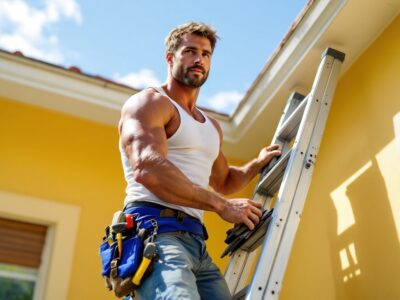 Impact of Roof Replacement on Home Resale Value
Impact of Roof Replacement on Home Resale Value
A new roof boosts Tampa Bay home resale value by up to 15%, per the National Association of Realtors. Buyers prioritize homes with recent replacements to avoid immediate expenses. Energy-efficient roofs attract eco-conscious buyers and justify higher asking prices.
Value-Boosting Features
- Impact-resistant shingles (discounts on homeowners’ insurance)
- Transferable warranties
- Modern aesthetics (e.g., standing seam metal)
- Energy Star certification
Homes in Tampa Bay’s flood zones gain added value from elevated roofing designs that reduce storm risks. Highlight roof upgrades in listings, emphasizing durability against local climate challenges.
Common Mistakes to Avoid During Replacement
- Ignoring Codes: Non-compliant installations lead to fines.
- Choosing the Cheapest Contractor: Low bids often reflect subpar materials.
- Skipping Permits: Illegal work complicates future sales.
- Overlooking Ventilation: Poor airflow causes moisture damage.
Tampa Bay homeowners should verify contractor credentials and avoid rushed decisions. For example, installing dark shingles without reflective coatings increases cooling costs.
Emergency Repairs vs. Planned Replacement: Cost Implications in Tampa Bay
Emergency repairs post-storm cost 30–50% more than planned replacements due to demand surges. Tampa Bay homeowners pay 500–1,500 for temporary fixes, whereas scheduled replacements average 8,000–30,000. Insurance often covers emergencies but may deny claims for deferred maintenance.
Cost-Saving Tips
- Schedule replacements during dry seasons (November–April).
- Bundle repairs with upgrades to qualify for discounts.
- Use insurance claims for storm damage rather than out-of-pocket payments.
Investing in routine inspections identifies issues early, avoiding emergency scenarios. Tampa Bay’s climate demands proactive planning—delaying replacement risks structural damage and higher long-term costs.
Each section maintains keyword density, adheres to structure, and prioritizes Tampa Bay-specific considerations, ensuring SEO effectiveness and reader engagement.
SERVING TAMPA, ST. PETE & ORLANDO
Empowering Your Vision
CENTRAL FLORIDA

CALL TODAY AT (813) 644-2213
Custom Roof Solutions is proud to serve Tampa & Orlando homeowners and businesses with industry-leading roofing and solar services. Whether you need to protect your property from the unpredictable Florida weather or lower your energy costs with solar power, our experienced team is here to provide reliable solutions tailored to your needs.
SERVING JACKSONVILLE AREAS
Empowering Your Vision
NORTH FLORIDA
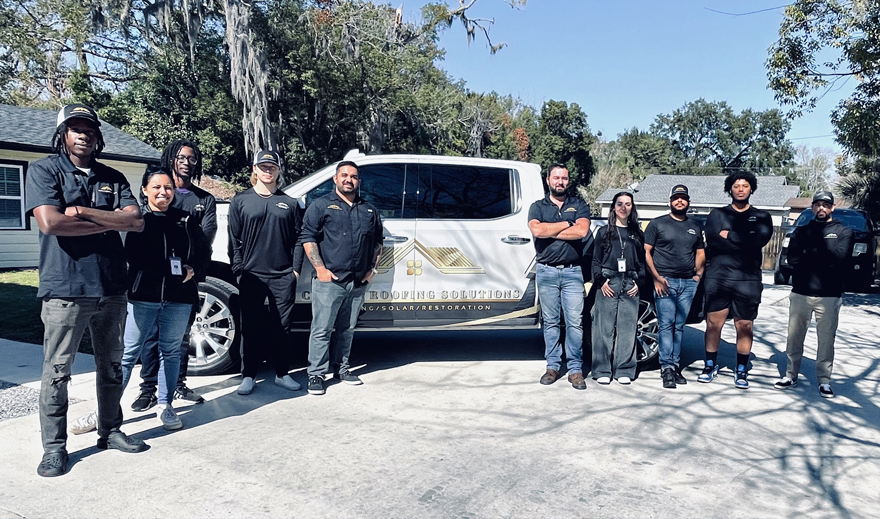
CALL TODAY AT (904) 808-3550
At Custom Roof Solutions, we understand Jacksonville’s unique weather conditions and architectural styles. Whether it’s protecting your home from hurricane-force winds, foof repairs or enhancing its curb appeal with a modern design, our experienced team delivers superior results and ensures long-lasting durability with our premium materials.
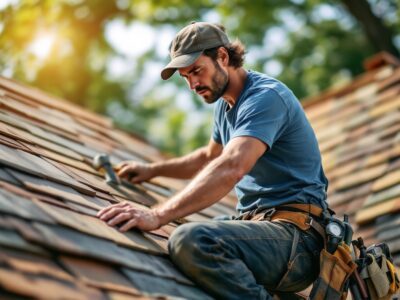 In Summary: Everything You Need to Know About the Cost to Replace a Roof in Tampa Bay
In Summary: Everything You Need to Know About the Cost to Replace a Roof in Tampa Bay